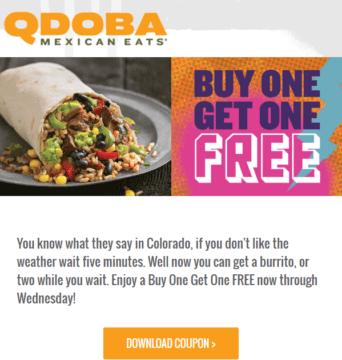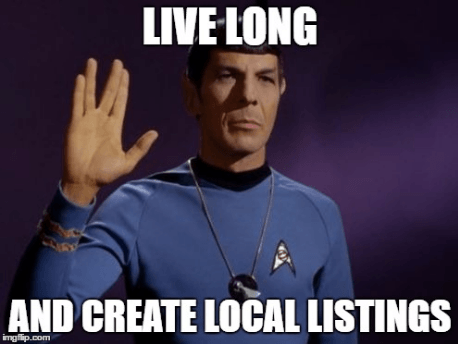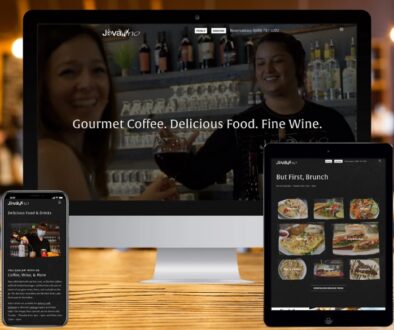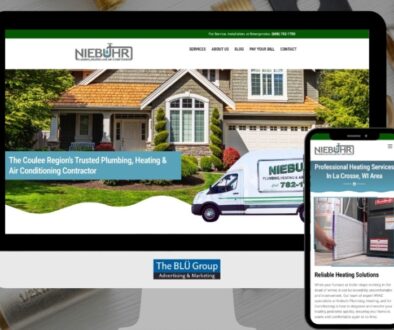4 Effective Local SEO & Positioning Strategies
For most small businesses, local positioning and optimizing your business for local seo is very important. Check out this article, 4 Effective Local Positioning Strategies You’re Overlooking, for a few great tips on how to take advantage of your local listings and truly get in front of your customers online.
If you’re not getting in front of your audience when your audience is trying to find you, you are in trouble — especially on a local level, where multiple competitors compete within close proximity.
The idea that content is key to increasing local search visibility is not new, but strategies to determine exactly what content your audience is seeking are constantly discovered.
You can create great content all you want, but if your audience isn’t searching on those terms, or if they are uninterested in that content, time and energy spent on producing the material will not render increases in positioning.
Great content that your audience is seeking, on the other hand, can help secure visibility for highly searched keywords, generate linkable content, increase new visitors to the site and help boost rankings.
Following are four often-overlooked strategies for obtaining insight into what your audience is searching on and interested in:
- Researching competitors. What ideas am I missing?
- Personalizing content. How am I appealing to my audience on a local level?
- Identifying and pursuing low-hanging fruit. What small changes will make a big impact?
- Utilizing native advertising. Is my content engaging?
Planning a content strategy using these four strategies can help a business elevate positioning in local search.
1. Researching Competitors
Depending on how competitive your industry is in local search, delving into competitive analysis can help you uncover where your local competitors have strong presence, thus allowing you to directly compete with them on local industry-related sites that you may have missed.
Understanding what your competitors are doing also gives you an opportunity to get ahead by exploring SEO techniques that haven’t yet been utilized (or applied correctly) by the competition.
2. Personalizing Content
Getting in front of a customer, locally, can be tough for a multi-regional company, or even just a standalone store. Through research, I found that one of the main techniques that engages an audience is customization of all products and services.
Qdoba is one primary example that illustrates this idea of personalization through email marketing. Qdoba consistently sends emails based on geographical location. Seeing as I’m in Colorado, most of these emails surround the chaotic weather with a custom subject line based on my location.
For example, the email below was sent with the subject, “BOGO, Thanks Mother Nature,” and relates to how the weather went from significantly warm to drastically cold:

From the consumer side, these emails are comedic, engaging and overall relatable to the receiver.
On the marketer’s side, sending these emails plays into a larger on-site content strategy by allowing the marketer to test various subject lines, copy and images to analyze what versions drive stronger open and conversion rates. Then the information derived from the analysis can be echoed throughout more engaging content on-site.
Execute on this strategy to keep a visitor on the site longer and lower the bounce rate — one element that may play into Google’s local listing ranking algorithm.
3. Identifying and Pursuing Low-Hanging Fruit
Even if your local business is not currently ranking well in search, identifying opportunities within the local digital landscape and executing on those opportunities successfully can drive strong results in local listing positioning over time.
Local citations (with a consistent NAP)
Investigate local citation sites, and capitalize on sites that will inherently rank above a local business (e.g., yellowpages.com, yelp.com). Elevate local search positioning by optimizing your listings on those industry specific industry citation sites. Most require a mere phone call to claim the page that highly outranks your organic listing — and once on the site, barnacle SEO takes effect.
Moz has helped identify top citation sites that span a variety of industries, including bakeries, yoga studios, security services, flooring companies and more. You might find that if you search your specific industry, a local search site for the specific industry ranks. This is where you want a listing.

Duplicate listings
Duplicate listings occur when there are two or more identical listings created within one platform. Perhaps the CEO and the CMO each created a listing within Google but weren’t aware that the other had done so. Perhaps you moved locations and created a local listing with the new address, unaware that a listing had already been created with the old address.
Duplicate listings can cannibalize your SEO efforts by confusing the search engine. Google doesn’t know whether to surface the new or old listing (or both). Furthermore, customers become frustrated when they show up at one location (found in one listing), only to find that you moved.
A case study by Moz — which focused on a local chapter of the organization, SCORE — shows how having duplicate listings of a local site can create a monstrous headache and affect local search rankings. The case study shares insight on how many local search sites are actually pulling from other sites that must be updated in the event of a move.
Reviews
Have an email template on file that invites your best customers to review your business and service on Google+. Google includes the star ratings on the SERP once the business garners numerous reviews, and these stars next to your listing will help boost your visibility in crowded local results.
Utilizing Native Advertising
Testing content with native advertising can help a local marketer understand what content the audience responds most positively to. The idea is to figure out what content converts users in a “native/most organic” setting where we pay for placements to determine engagement on specific content and copy (within local parameters).
When creating a local content strategy, we want to figure out what type of content and language converts users within a specific area. Working to determine this through local SEO can take months — but if we create content in a way that appears organic to a user (despite not being organic), we can quickly get an idea of language that converts well, with evidence to back it up.
From there, we can utilize the higher-converting copy in ways that can help increase search engine visibility, whether that means tweaking our page content, better optimizing our title tags/meta descriptions or incorporating high-performing copy into local listings on third-party sites.
Note that this is a somewhat expensive route to go to test content, but there are additional benefits as well — native advertising on its own can help build brand awareness within your target area, which can ultimately work in tandem with search to build business.
Combining Strategies for Comprehensive Results
Building a content strategy around increasing local listing positioning can be a time-consuming, yet incredibly rewarding experience as you begin to see local search rankings rise. What are some strategies you’ve implemented to increase local search performance?
Source: 4 Effective Local Positioning Strategies You’re Overlooking




